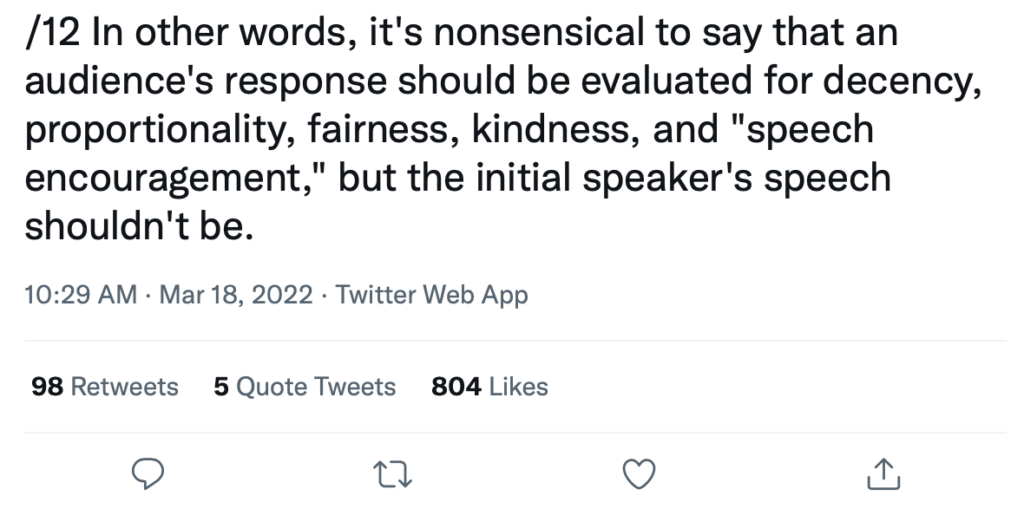The New York Times is getting a fair amount of static for the opening paragraph of their editorial about the First Amendment and free speech this morning. Here’s the headline and first two paragraphs:
America Has a Free Speech Problem
For all the tolerance and enlightenment that modern society claims, Americans are losing hold of a fundamental right as citizens of a free country: the right to speak their minds and voice their opinions in public without fear of being shamed or shunned.
This social silencing, this depluralizing of America, has been evident for years, but dealing with it stirs yet more fear. It feels like a third rail, dangerous. For a strong nation and open society, that isdangerous.
There are certainly a lot of concerns today about free speech, but the central policy claim that we have a fundamental right to say what we want without “fear of being shamed or shunned” is something I would have hard time accepting from my commentary students.
Dr. Rosemary Pennington (who recently wrote a guest blog post here about media framing of the Russian war against Ukraine) points out that this is not at all what the 1st Amendment has to say:
There are consequences to speech & there should be.
All we are guaranteed is that the government won’t get in the way of our speech.
That’s it.
And as members of the news media the New York Times should know that.
— Rosemary Pennington (@rompenni) March 18, 2022
Defense attorney and legal commentator Ken White, who tweets under the handle @Popehat, gives a scathing analysis of just the first paragraph of the Times’ editorial:
Dr. Jeremy Littau of Lehigh University points out the absurdity of the editorial by looking at things the Times has written in the past:
Remember that time NYT reported on Trump’s words and he got shamed? https://t.co/lhfM3OWoph
— Jeremy Littau (@JeremyLittau) March 18, 2022
Alissa Wilkinson, a senior culture reporter and critic for Vox.com and a tenured associate professor at King’s College in New York City, points out the absurdity of the Times’ arguments:
And for those of you, like me, who do not have James 3 from the Bible memorized, here would seem to be the relevant portion:
5 Likewise, the tongue is a small part of the body, but it makes great boasts. Consider what a great forest is set on fire by a small spark. 6 The tongue also is a fire, a world of evil among the parts of the body. It corrupts the whole body, sets the whole course of one’s life on fire, and is itself set on fire by hell.
7 All kinds of animals, birds, reptiles and sea creatures are being tamed and have been tamed by mankind, 8 but no human being can tame the tongue. It is a restless evil, full of deadly poison.
9 With the tongue we praise our Lord and Father, and with it we curse human beings, who have been made in God’s likeness. 10 Out of the same mouth come praise and cursing. My brothers and sisters, this should not be. 11 Can both fresh water and salt water flow from the same spring? 12 My brothers and sisters, can a fig tree bear olives, or a grapevine bear figs? Neither can a salt spring produce fresh water.
So if you use this NY Times editorial in either a commentary or media literacy class, here are some discussion questions to start with:
- What protection does the 1st Amendment provide us with?
- Does freedom of speech imply freedom from criticism? Why or why not?
- Why should someone speaking critically be protected from responding criticism?
- What responsibility do we have for what we say in public? In private?
What are your thoughts on this editorial?

